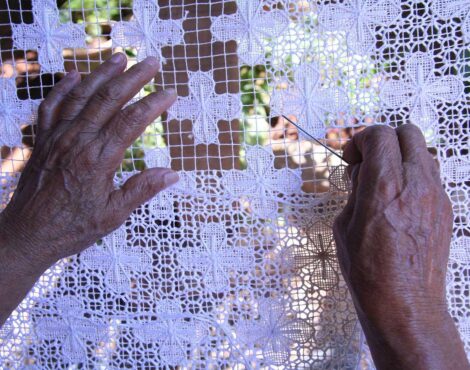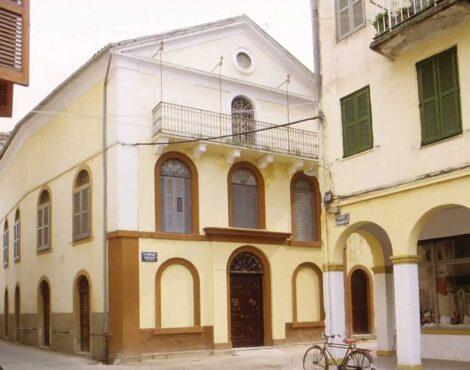The Old Town of Corfu, with its rich history and multicultural heritage, hides neighborhoods that remain largely unknown to the general public but are filled with significant historical and cultural value. Among these hidden gems are the districts of Agioi Pateres (Holy Fathers), Agioi Apostoloi (Holy Apostles), and Tenedos, each with its own unique story and contribution to the tapestry of the city’s identity.
The district of Agioi Pateres is located on one of the hills within the Old Town and offers a panoramic view of the historic center. At the summit of the hill stands the Church of the Holy Fathers, a prominent religious monument of the area. This church serves not only as a place of spiritual significance for both residents and visitors, but also as a cultural venue, hosting various events. With a history stretching back centuries, it houses some of the most beautiful religious icons on the island. It is worth noting that the church suffered extensive damage during the bombing raids of September 14, 1943. After being abandoned for many years, it was eventually restored, regaining its former glory. Not far from the church lies the Kapodistrias Philharmonic Union, a cultural institution with a long-standing presence in Corfu. This philharmonic society has played a vital role in the island’s cultural life by offering music education and actively participating in local events and parades. Its presence strengthens the artistic character of the district and helps preserve the island’s deep-rooted musical traditions. It also brings vitality and melody to this unique corner of the city, creating an atmosphere that feels like a scene from a film.
Another lesser-known district of the Old Town is that of Agioi Apostoloi. Unlike the more tourist-oriented parts of the city, this neighborhood usually escapes the spotlight. It is located in the southern part of the Old Town, adjacent to the old city walls, and borders the district of Porta Remounta. In fact, Agioi Apostoloi serves as a kind of threshold between the Old Town and the newer parts of Corfu. Its strategic location connects the historical center with modern areas of the city. In earlier centuries, the area was home to the Church of the Holy Apostles, built between the 15th and 16th centuries. This church was once a significant religious and architectural landmark in the area, though today only traces of it remain.
On the opposite side of the city lies the New Fortress, and right next to it is the district of Tenedos, a place rich in history and cultural importance. The Church of Tenedos, from which the district takes its name, was founded in the late 15th century by Catholic clergy who brought an icon of the Virgin Mary from the island of Tenedos after the fall of the Byzantine Empire. This icon became the focal point of worship in the church. The name “Tenedos” thus originates from this relic. During the Ottoman siege of 1716, the monastery was heavily damaged, but it was rebuilt in 1723, as indicated by an inscription above the main entrance. During the period of the French Republic (1797–1799), the monastery became a center for intellectual and cultural activities. In 1798, Greece’s first printing press operated here under the direction of the Frenchman Joseph Zouvain. At the same time, Greece’s first public library was established on the same premises. Its foundation came from the private collection of the Church of Saint Justine, which had been relocated from the Garitsa area. This early library would go on to form the basis for the Ionian Academy’s later library. In addition, the first public Greek school for the training of civil servants was established within the monastery grounds, with Ioannis Kapodistrias himself acting as inspector of education.
Architecturally, the church is of particular interest, combining elements of Latin and Venetian styles. It features a distinctive bell tower and dome, while its interior is adorned with iconostases from the late 19th century, dedicated to Saints Andrew and Nicholas. Despite its cultural significance, the church was severely damaged during the bombings of 1943. Unfortunately, much of the monastery complex was never reconstructed. Today, the church remains closed to the public. Nevertheless, the area surrounding it has developed into a picturesque destination, full of courtyards, tavernas, and bars, all retaining the distinct Venetian atmosphere that defines much of Corfu’s charm. The Church of Tenedos, despite its current inaccessibility, stands as a living monument to Corfu’s history. It reflects the island’s layered cultural and spiritual influences, reminding visitors of the pivotal role this site once played in the development of Greek education and culture. Even in its partially ruined state, it continues to inspire admiration and reverence.
In conclusion, the neighborhoods of Agioi Pateres, Agioi Apostoloi, and Tenedos are vital chapters in the historical and cultural narrative of Corfu’s Old Town. Each district, with its own unique identity and contribution, offers a deeper understanding of the island’s rich cultural heritage. Exploring and studying these often-overlooked areas enhances our appreciation for Corfu’s historical diversity and artistic wealth, a reminder that true beauty and meaning often lie in the paths less traveled.





